Jaw Exercises for TMJ
6th Sep 2020

It seems like going about your normal routine would provide enough of a workout for the temporomandibular joint. After all, it's used every time you open or close your mouth. However, if you suffer from a TMJ disorder, jaw exercises for TMJ disorders can ease the discomfort and mobility issues these issues often cause.
There are several different jaw exercises for temporomandibular disorders, so it's worth trying a few to see which ones work best for you. In this article, we’ll take you through jaw exercises for TMJ disorders and show you other ways to decrease TMD pain.

TMJ Exercises
The TMJs are the hinge joints that connect the jaw to the skull. Along with the surrounding jaw muscles, they're used every time you open or close your mouth to eat, drink, laugh, or speak. When these joints and muscles malfunction, the results can be painful. Sufferers often battle pain in the jaw, face, ear, and neck. They also experience headaches, restricted movement of the mouth, and audible clicking or popping.
If you suffer from a TMJ disorder, you're not alone. According to the National Institute of Dental and Craniofacial Research, more than 10 million Americans are affected by TMJ disorders. Fortunately, simple jaw exercises for tmj like the ones suggested by Healthline may help improve both your comfort and the movement of your jaw's joints and muscles. As you review the instructions, you’ll see how user-friendly these exercises are.
Related Articles:
Exercise 1: Tongue Touch Timeout
Tuck the tip of your tongue behind your front teeth so it gently touches the roof of your mouth. Let your upper and lower teeth separate as you relax your jaw muscles. Hold the position for a few seconds.
Exercise 2: Goldfish
With your tongue resting lightly against the roof of your mouth, place one finger in front of your ear on the TMJ. Put the index finger of your other hand on the front of your chin. When you're ready, drop your lower jaw about halfway. Then, close your mouth to complete one partial goldfish.
Full goldfish are also popular. Here, you follow the same exercise but open your mouth fully before closing it. With either goldfish variation, you should expect mild resistance but no pain. Repeat the exercise to complete a set.
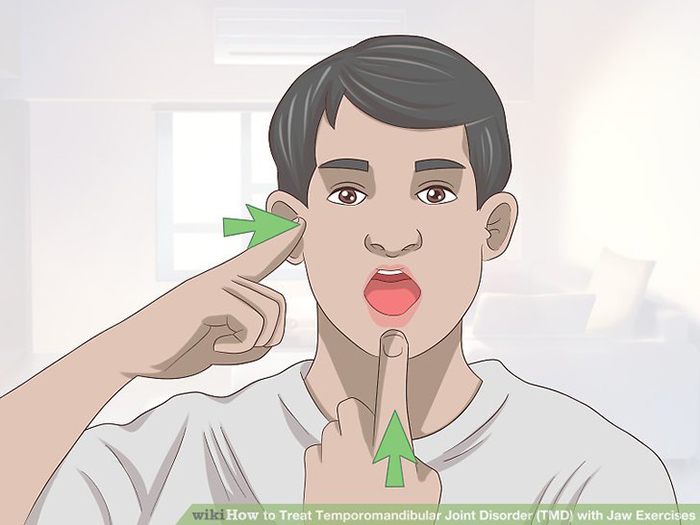
Exercise 3: Opening Resistance
With your mouth closed and your head level, place your thumb underneath your chin. While gently pushing against your chin, open your mouth slowly. Hold this position for a few seconds. Then, close your mouth. Repeat the exercise to complete a set.

Exercise 4: Closing Resistance
With your mouth open, place both of your thumbs under your chin and your index fingers on the front of it. Create mild resistance by gently squeezing your chin. Then, close your mouth. Repeat the exercise until you’ve completed a set.
Exercise 5: Chin Tucks
Face forward with your chin tipped up, your shoulders back, and your chest up. Then, pull your chin down to create the look of a double chin. Hold the position for three or four seconds before relaxing. Repeat this jaw exercise for tmj as directed to complete a set.
Exercise 6: Side-to-Side Jaw Strengthening
Find an item that is clean, safe to place in your mouth, and about 1/4 inch thick. Options include an ink pen or a stack of tongue depressors or popsicle sticks. Place the item between your upper and lower teeth. Shift your jaw from side to side slowly and steadily. Then, return it to a neutral position. When you're ready to increase the difficulty of the exercise, use a thicker object.
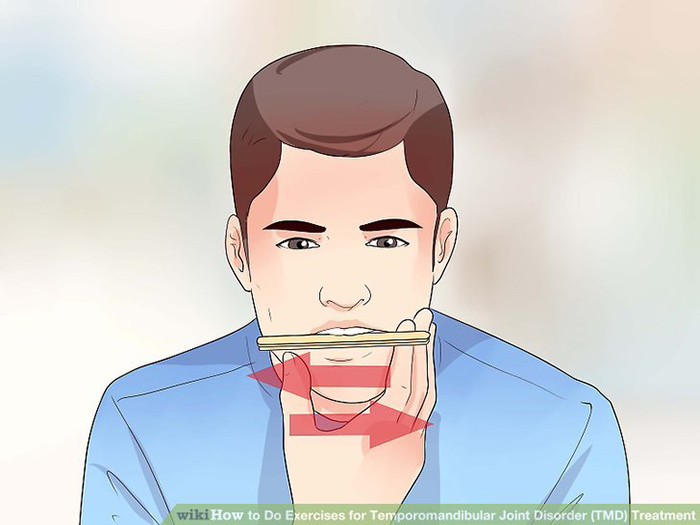
Exercise 7: Forward Jaw Strengthening
Choose an item that is clean, safe, and roughly 1/4 inch thick. An ink pen or a stack of popsicle sticks will work. Hold the item between your upper and lower teeth. Push your lower jaw forward so your lower lip sticks out and your bottom teeth are in front of your top teeth. Then, return your jaw to a neutral position. Increase the thickness of the object when you're ready to make this jaw exercise more challenging.
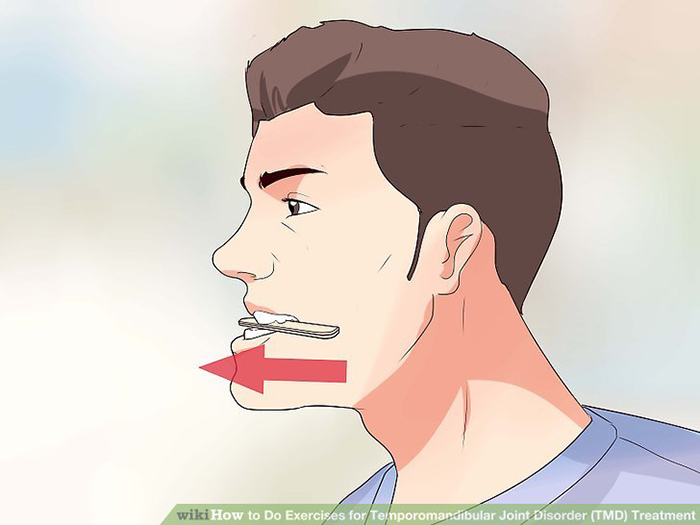
Exercise 8: Mirroring
As you watch your reflection in a mirror, open your mouth slowly, working to keep your top two front teeth centered above your bottom two front teeth. Close the mouth and repeat as desired to complete a set.
Exercise 9: Side Stretch
Open your mouth as wide as you comfortably can. Place the fingers of your right hand on the right side of your jaw. Slowly push your jaw to the right. Hold the position for about 10 seconds before allowing your jaw to return to a neutral position. Switch sides and repeat the movement on the left side.
Exercise 10: Mandible Massage
Close your mouth. Locate the hinge joints on either side of the jaw with your fingertips. Using a light, downward motion, gently massage the jaw muscles.
Related Articles:
- Vitamins And Supplements To Treat TMJ
- Does Insurance Cover Botox For TMJ?
- Can a Chiropractor Help With TMJ Disorders?
More Ways to Decrease TMJ Disorder Pain
Exercises like those described above are an easy, affordable, drug-free way to combat TMJ pain. However, they don't offer instant pain relief, and they may not provide enough relief for every TMD sufferer. Thankfully, there are more strategies that you can utilize to fight against the discomfort of TMD:
Avoiding movements and habits that irritate the TMJs:
Large jaw movements like yawning, singing, or biting your lower lip can aggravate your TMJs. Likewise, eating tough foods, chewing gum, or biting your nails can stress the jaw joints and muscles. Avoiding these types of actions can give the joints time to relax and heal.
Using pain medications:
Over-the-counter pain relievers like ibuprofen or acetaminophen can reduce jaw pain and inflammation. In severe cases, prescription pain relievers and muscle relaxers may offer relief.
Seeing a physical therapist:
While many of the jaw exercises for TMJ are simple, a physical therapist can create a customized, detailed plan that is tailored to your specific situation. In addition to jaw exercises, they may suggest treatments like applying ice or heat, massage, biofeedback, or acupuncture.
Using a night guard or an oral splint:
A misaligned bite, tooth grinding, and jaw clenching can all irritate the joints and muscles of the jaw. Wearing a properly fitted night guard or oral splint designed to treat these issues can also help with TMJ disorders.
Related Articles:
TMJ Disorders and Bruxism
TMD is a painful condition that involves malfunctions of the joints and muscles of the jaw. Bruxism is another painful condition that can impact the jaw. It involves habitual teeth grinding and jaw clenching and is spurred by a physical issue like a dental misalignment, a psychological trigger like stress or anxiety, a genetic cause, or a mix of multiple factors.
The repetitive motions associated with bruxism can damage the teeth and the jawbone, causing pain in the face, ear, neck, and jaw. Repeated grinding and clenching is more worrisome for those who suffer from TMD, as it can strain the jaw muscles and joints. This continual aggravation is likely to cause more pain and TMJ dysfunction.
On a positive note, treating bruxism may also offer some relief from TMJ disorders. Wearing a custom night guard is easy to do and can deliver significant benefits by protecting the teeth. Mouth guards also ease the jaw into a relaxed position, which reduces the strain on the TMJs. The opportunity to experience less discomfort is certainly something to smile about.
The pain that a TMJ disorder can cause is real, but so is the potential for relief. Jaw exercises for TMJ disorders, especially when combined with other strategies like avoiding irritating movements and wearing a night guard, can improve your comfort and your jaw's range of motion.
Pro Teeth Guard offers custom-fit night guards online for an affordable price. Made in a professional dental lab using professional materials and processes, our night guards are effectively the same night guards you’d receive from a dentist.
Sources:
- Images: https://www.wikihow.com/

- Most Popular
- Hard Outside, Soft Inside
- 2MM Thick
- Moderate / Heavy
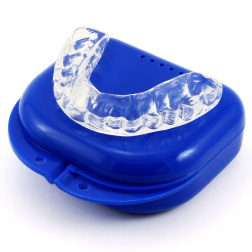
- Most Durable
- Hard Materials
- 1.5MM Thick
- Heavy / Severe
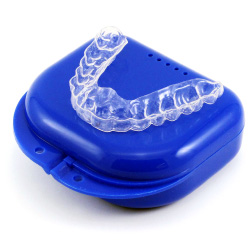
- For Day Time Use
- Thin, Barely Visible
- 1MM Thick
- Light / Moderate
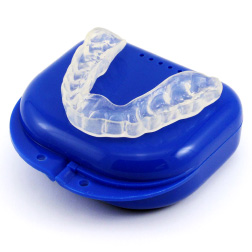
- For Clenching
- Flexible & Soft
- 1.5MM Thick
- Light / Moderate

